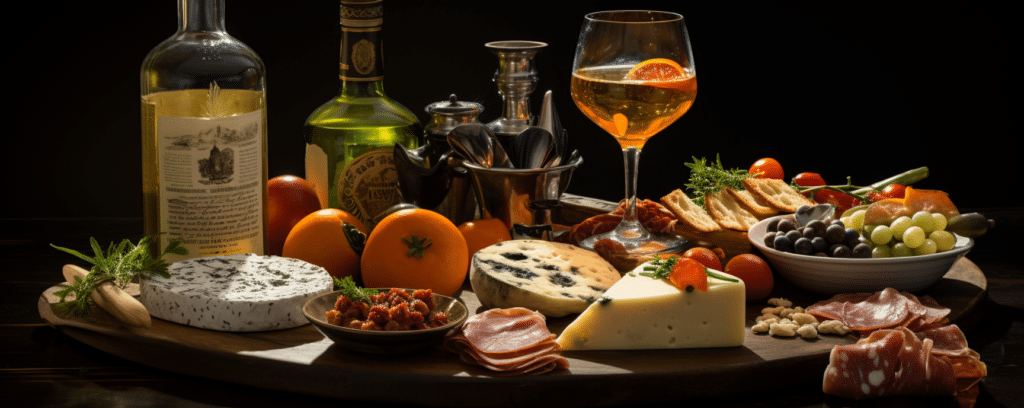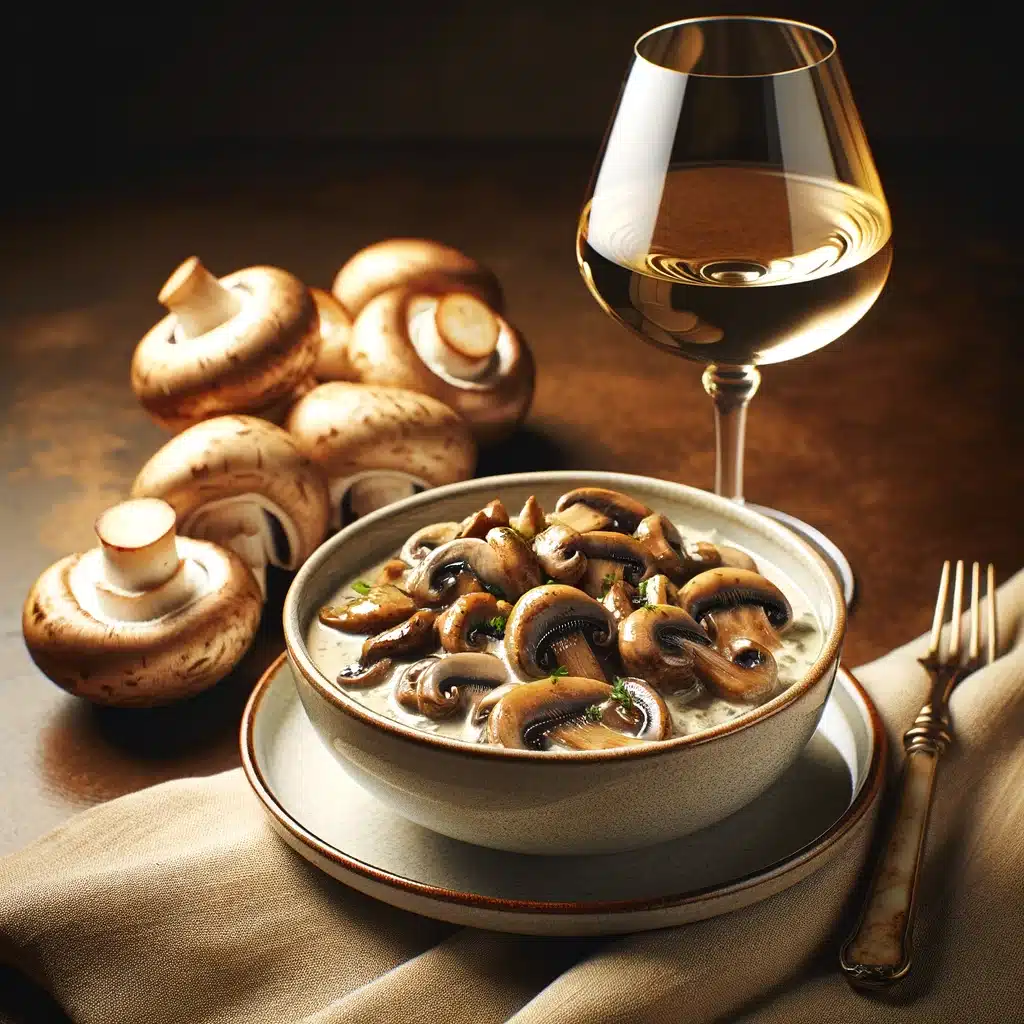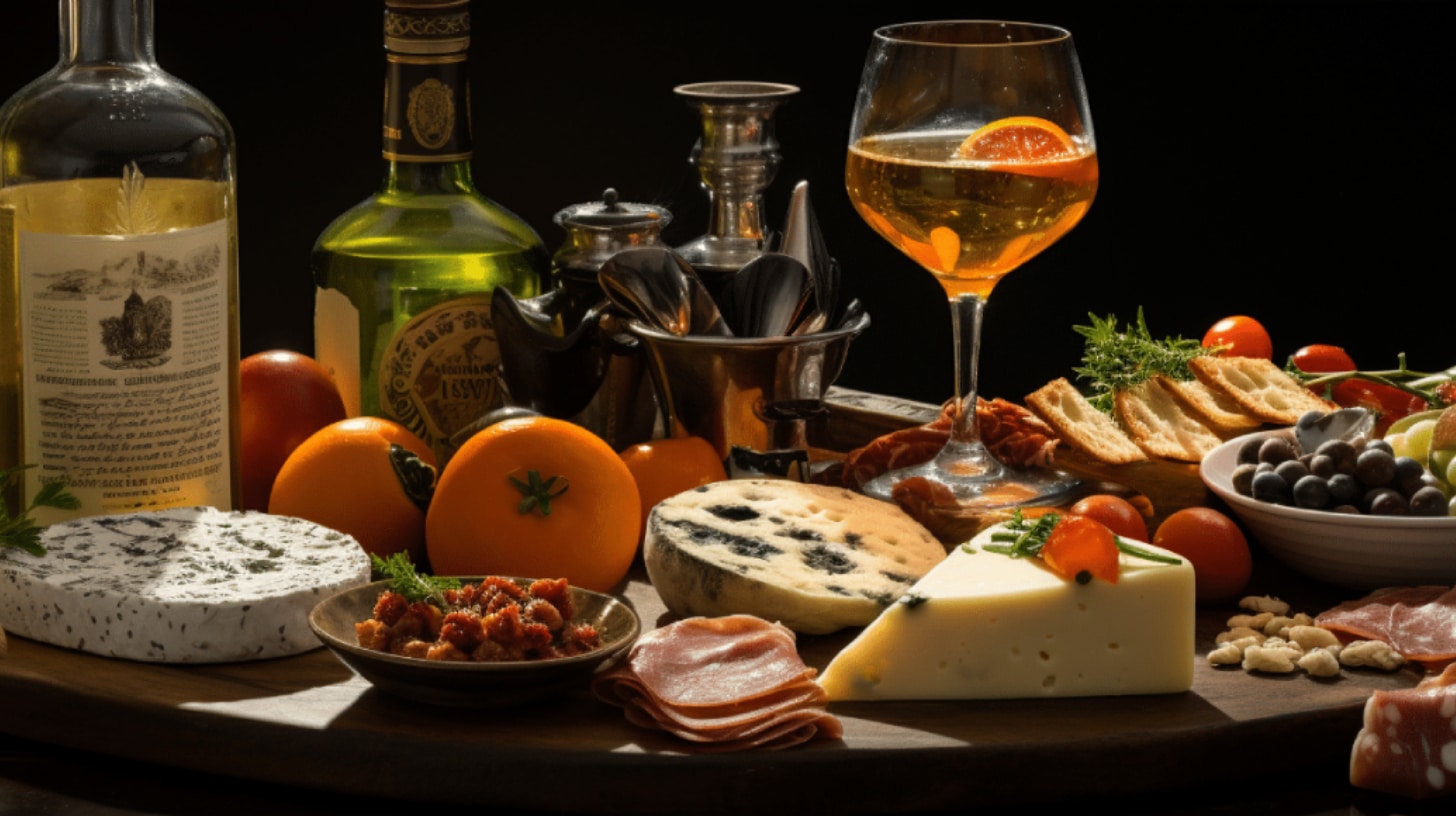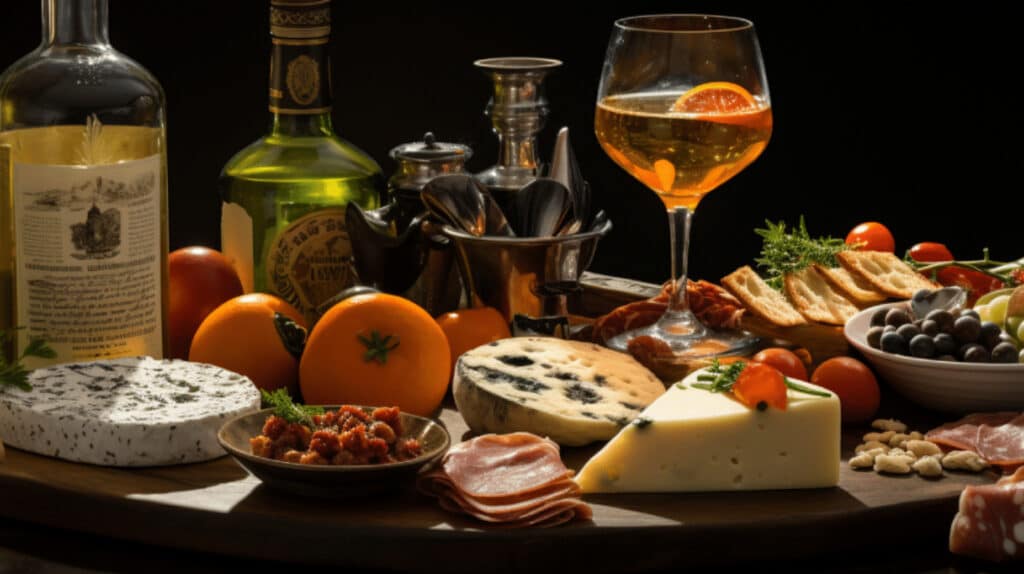Vermouth: A World of Flavours Awaiting Pairing
Understanding the essence of vermouth is crucial to mastering its food pairings. The two primary types, sweet (often red) and dry (typically white), offer contrasting flavour spectrums. Sweet vermouth, with its rich, spiced, and sometimes floral or fruity undertones, pairs wonderfully with both savoury and sweet culinary creations. On the other hand, dry vermouth, known for its herbaceous and slightly bitter profile, can add depth and contrast to a variety of appetisers and main courses.
The journey into the world of vermouth pairings is not just about matching flavours; it’s about creating experiences. Each pairing is an opportunity to bring out hidden notes in both the food and the wine, creating a harmonious balance that delights the senses. This guide aims to navigate through this journey, offering insights and inspirations for pairing vermouth with a range of gastronomic delights, from the simplest of snacks to the most elaborate dishes.
As we delve into this exploration, remember: the best food pairings are those that respect the unique characteristics of both the vermouth and the food, creating a partnership where each element shines without overpowering the other. Whether you’re a vermouth aficionado or a curious culinary explorer, this guide will equip you with the knowledge and inspiration to embark on your own vermouth pairing adventures.

Understanding Vermouth’s Versatility
The Symphony of Flavours in Vermouth
Vermouth’s allure lies in its remarkable versatility, attributed to its diverse flavour profiles. This section unravels the intricate tapestry of tastes found in different types of vermouth and how they can complement various dishes.
The Anatomy of Vermouth’s Flavour
To appreciate vermouth’s culinary potential, one must first understand its composition. Vermouth starts as a base of white wine, fortified with a spirit (usually brandy) and aromatized with a secret blend of botanicals. These botanicals, which can include herbs like wormwood, spices such as cinnamon or cardamom, and floral elements like chamomile or elderflower, define each vermouth’s unique character.
Dry Vermouth: A Bitter-Sweet Dance
Dry vermouth, with its pale colour and subtle bitterness, offers a herbaceous bouquet that can elevate a dish’s flavour. Its crisp, dry nature makes it an excellent pairing for lighter foods, such as seafood or fresh salads. When used in cooking, dry vermouth can deglaze pans, lending a nuanced complexity to sauces and stews.
Sweet Vermouth: Rich and Spiced Elegance
In contrast, sweet vermouth, often deeper in hue, brings a rich sweetness, spiced with undertones of botanicals. It pairs exceptionally well with stronger-flavoured foods, like mature cheeses or hearty meat dishes. Sweet vermouth can also be a key ingredient in desserts, providing a spiced, aromatic sweetness.
Understanding the Balance
The key to pairing food with vermouth lies in understanding the balance of flavours. Dry vermouth, with its more subtle profile, complements dishes without overpowering them. Sweet vermouth, on the other hand, can stand up to bolder flavours, balancing them with its richness. This section will guide you through pairing both types of vermouth with a range of dishes, ensuring a harmonious interplay of flavours.
Savory Appetizers with Vermouth: Perfect Starters
The right appetizer can set the tone for an entire meal, and when paired with vermouth, the culinary experience reaches new heights. This section explores a variety of savory appetizers that harmonize beautifully with the complex flavors of vermouth.
The Art of Food Pairing: Vermouth with Appetizers
Pairing appetizers with vermouth is an art that balances the wine’s botanicals with the appetizer’s flavors. Whether it’s a dry or sweet vermouth, the key is to complement and contrast the flavors to enhance the overall dining experience.

Vermouth-Infused Savory Bites
For dry vermouth lovers, consider appetizers that echo its herbaceous and slightly bitter notes. Think of bruschetta topped with fresh tomatoes and basil, drizzled with a vermouth-infused olive oil, or delicate seafood dishes like shrimp cocktail with a vermouth-accented sauce. These light and refreshing starters are perfect for whetting the appetite.
On the sweeter side, sweet vermouth pairs wonderfully with richer, more robust appetizers. Imagine a cheese platter featuring strong-flavored cheeses like blue cheese or gorgonzola, complemented by a sweet vermouth reduction as a drizzle. Meat-based appetizers, like mini meatballs in a sweet vermouth glaze, can also be a hit, offering a perfect balance of sweet and savory.
Vermouth as a Culinary Ingredient in Appetizers
Vermouth’s role in food pairings with appetizers isn’t limited to pairing; it can also be a star ingredient. Incorporating vermouth into recipes, such as in marinades or sauces, can add a unique flavor dimension to traditional appetizers. A simple example is marinated olives, where a mix of dry vermouth, herbs, and citrus zest elevates the humble olive to a gourmet level.
Creative Vermouth Appetizer Ideas
For those looking to get creative, there are endless possibilities. A tartare, whether it’s tuna or beef, can be enhanced with a splash of dry vermouth, adding a subtle complexity to the dish. Vegetarian options like stuffed mushrooms or grilled asparagus can also benefit from a hint of vermouth in their preparation.
Cheese Selection for Vermouth: A Match Made in Heaven
Exploring the Harmony of Cheese and Vermouth
The pairing of cheese and vermouth is a gastronomic delight that dates back centuries. This section delves into the art of selecting the perfect cheese to complement the nuanced flavors of vermouth.

The Basics of Cheese and Vermouth Pairing
Pairing cheese with vermouth is about finding a balance between the intensity of the cheese and the character of the wine. Dry vermouth, with its lighter, herbaceous notes, pairs well with milder cheeses, while sweet vermouth’s richness can stand up to more assertive cheeses.
Ideal Cheese Pairings for Dry Vermouth
When it comes to dry vermouth, cheeses that are young, creamy, and not overly strong are ideal. Think of fresh mozzarella, creamy goat cheese, or a mild brie as food pairings. These cheeses allow the subtle botanicals of the dry vermouth to shine through, creating a harmonious blend of flavors.
Sweet Vermouth and Bold Cheese Combinations
Sweet vermouth, with its deeper, more pronounced flavors, pairs beautifully with bolder cheeses. Aged cheddar, gorgonzola, or a pungent blue cheese can match the intensity of sweet vermouth. The sweetness of the vermouth balances the saltiness and sharpness of these cheeses, resulting in a delightful contrast.
Tips for Creating the Perfect Cheese Board
When preparing a cheese board to accompany vermouth, variety is key. Include a range of textures and flavors, from soft to hard cheeses, and from mild to strong. Accompaniments like nuts, fruits, and honey can also enhance the pairing experience, adding texture and complementary flavors.
The Role of Cheese Texture in Pairing
Texture plays a crucial role in pairing cheese with vermouth. Creamy cheeses can soften the bitterness of dry vermouth, while crumbly, aged cheeses can stand up to the robustness of sweet vermouth. Experimenting with different textures can lead to surprising and delightful pairings.
Vermouth Pairing Recipes: Main Courses and More
Crafting Main Courses with a Vermouth Accent
Vermouth’s versatility extends beyond appetizers and cheese food pairings; it can be a key component in main course recipes. This section showcases how vermouth can elevate main dishes, offering a range of recipes for both dry and sweet vermouth pairings.
Dry Vermouth in Savory Dishes
Dry vermouth can transform a simple main course into something extraordinary. Its herbaceous and slightly bitter notes work well in lighter dishes. For example, a seafood risotto can be enriched with a splash of dry vermouth, enhancing the flavors of the seafood while adding complexity to the dish. Chicken or pork dishes can also benefit from a vermouth-based marinade or sauce, adding depth and a hint of sophistication.
Sweet Vermouth for Richer Recipes
Sweet vermouth is ideal for heartier, richer main courses. Its sweetness can balance the savory elements of a dish, such as in a beef stew or a lamb shank braised in sweet vermouth. The spices and botanicals in the vermouth infuse the meat with a unique flavor profile, creating a dish that is both comforting and elevated.
Integrating Vermouth into Vegetarian Dishes
Vermouth isn’t just for meat-based food pairings; it can also enhance vegetarian recipes. A mushroom stroganoff, for instance, can be uplifted with a dash of dry vermouth, adding an earthy complexity. Similarly, a vegetable gratin can be livened up with a hint of sweet vermouth in the béchamel sauce, offering a subtle sweetness that complements the vegetables.

Recipe Ideas: From Classic to Contemporary
This section will provide a variety of recipes that incorporate vermouth, catering to different tastes and dietary preferences. From classic recipes with a vermouth twist to contemporary creations that showcase vermouth as the star ingredient, these recipes demonstrate the wine’s flexibility in cooking.
Sweet vs Dry Vermouth Pairings: Balancing the Flavors
Navigating the Contrast Between Sweet and Dry Vermouth
The choice between sweet and dry vermouth can significantly influence the direction of a food pairing. This final section provides insight into how to balance these contrasting vermouth types with food, ensuring a perfect match every time.
Understanding the Characteristics of Sweet and Dry Vermouth
Sweet vermouth, with its rich, spiced profile, pairs well with bold, hearty dishes or can be a delightful counterpoint to slightly spicy or tangy foods. Dry vermouth, on the other hand, with its crisp and herbal notes, complements lighter, more delicate dishes. It’s about balancing the intensity and flavor profiles to create a harmonious dining experience.
Pairing Strategies for Sweet Vermouth
When pairing sweet vermouth, consider the dish’s flavor intensity. It works beautifully with dishes that have a bit of weight or richness to them. For instance, a rich tomato-based pasta can be elevated with sweet vermouth, as its sweetness cuts through the acidity of the tomatoes. Similarly, a spiced duck or pork dish can be balanced out with the aromatic sweetness of the vermouth.
Finding the Right Match for Dry Vermouth
Dry vermouth demands a different approach. Its lighter body and subtle bitterness make it an excellent pairing for seafood, poultry, or even a fresh garden salad. In cooking, using dry vermouth in a creamy sauce or a light broth can add complexity without overwhelming the primary flavors of the dish.
Tips for Experimenting with Vermouth Pairings
Experimentation is key when it comes to vermouth food pairings. Consider the dominant flavors in your dish and think about how either sweet or dry vermouth could complement or contrast these flavors. Remember, the goal is to enhance both the drink and the dish, creating a memorable culinary experience.







